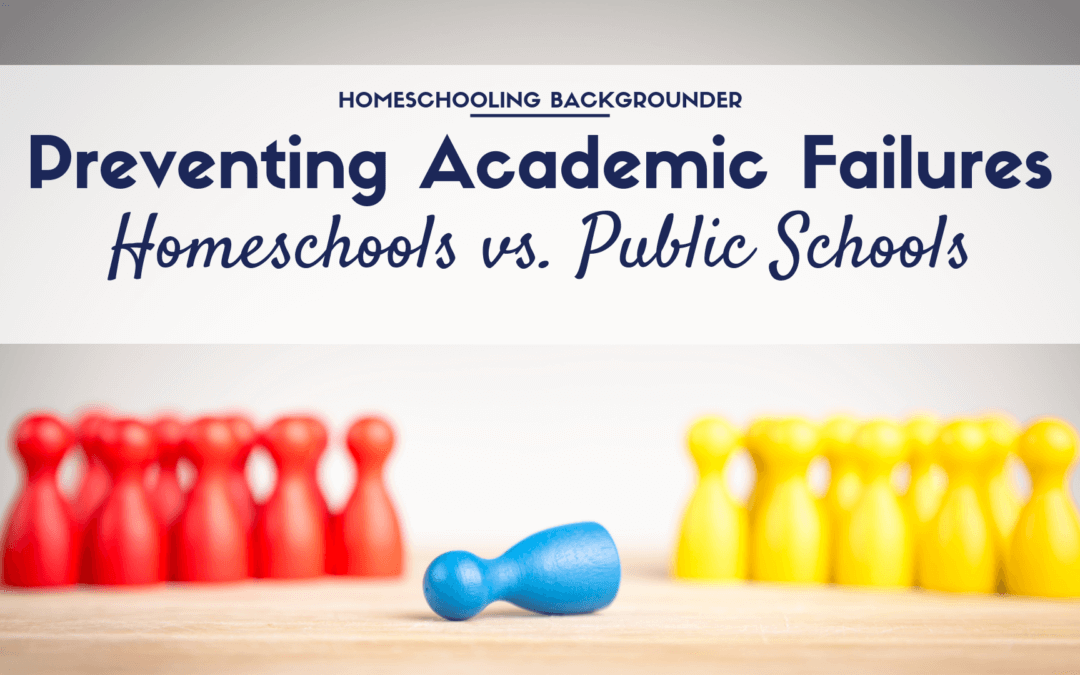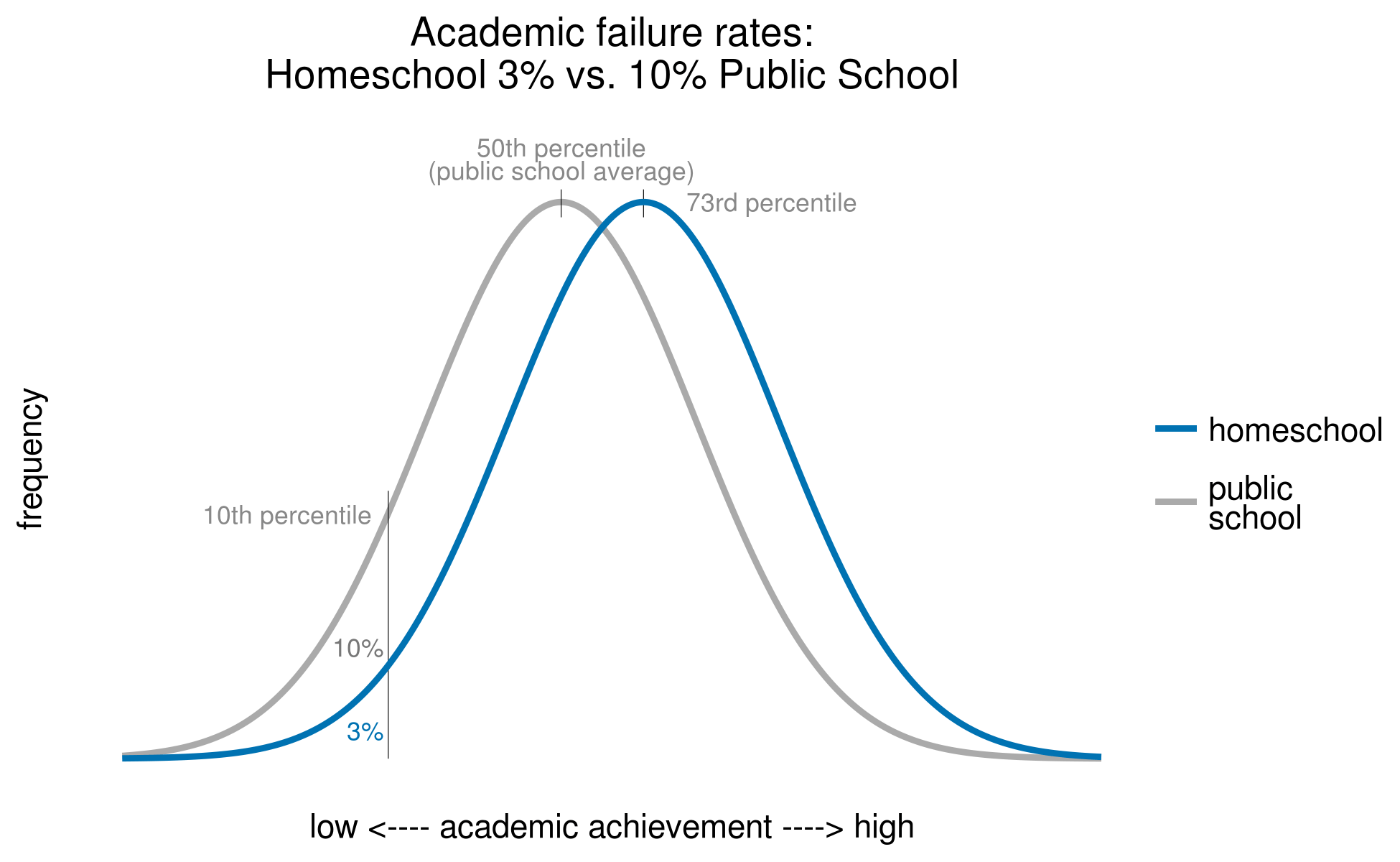Rodger Williams
December 14, 2018
How do homeschools compare with public schools on how well they prevent academic failures, as measured by standardized test scores?
The average U.S. homeschool standardized test score is in the range of 65 to 80 percentiles, according to the best available estimate. We use the midpoint of that range – the 73rd percentile rank – as our point estimate of the national average for homeschool academic achievement levels.
This is a credible estimate. Oregon homeschooled students averaged 73 percentiles on state-mandated standardized tests in 1999 (http://www.ode.state.or.us/teachlearn/specialty/home/1999/percen99.pdf) They have improved to a 79th percentile average in recent years.
The 50th percentile mark is the national average. Because public schools educate 88% of students nationally, the national average provides a useful approximation to the public school average.
Both homeschool and public school standardized test scores are normally distributed, having the familiar bell-shaped curve. The area under the curve represents number of students.
If we define the 1st to 10th percentile range as academic failure, 3% of homeschooled students fall in that failure range compared to 10% of public school students. At the low end of academic achievement, homeschools have fewer students failing proportionately than do public schools.
If we chose the 1st to 5th percentile range as failing, it would be 1% homeschooled vs. a 5% public school failing.
If the homeschool national average were the 65th percentile mark, then a 1st to 10th percentile failure range would contain 5% of homeschooled students vs 10% of public school students.
In all of these scenarios, homeschooled students are substantially better off academically than public school students when we look at failure rates.


